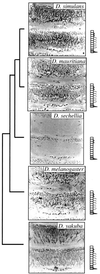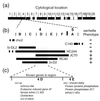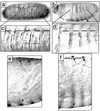Divergence of larval morphology between Drosophila sechellia and its sibling species caused by cis-regulatory evolution of ovo/shaven-baby
- PMID: 10781057
- PMCID: PMC18269
- DOI: 10.1073/pnas.97.9.4530
Divergence of larval morphology between Drosophila sechellia and its sibling species caused by cis-regulatory evolution of ovo/shaven-baby
Abstract
We report an extreme morphological difference between Drosophila sechellia and related species of the pattern of hairs on first-instar larvae. On the dorsum of most species, the posterior region of the anterior compartment of most segments is covered by a carpet of fine hairs. In D. sechellia, these hairs have been lost and replaced with naked cuticle. Genetic mapping experiments and interspecific complementation tests indicate that this difference is caused, in its entirety, by evolution at the ovo/shaven-baby locus. The pattern of expression of the ovo/shaven-baby transcript is correlated with this morphological change. The altered dorsal cuticle pattern is probably caused by evolution of the cis-regulatory region of ovo/shaven-baby in the D. sechellia lineage.
Figures




References
-
- Averof M, Akam M. Nature (London) 1995;376:420–423. - PubMed
-
- Carroll S B, Weatherbee S D, Langeland J A. Nature (London) 1995;375:58–61. - PubMed
-
- Panganiban G, Sebring A, Nagy L, Carroll S. Science. 1995;270:1363–1366. - PubMed
-
- Gellon G, McGinnis W. BioEssays. 1998;20:116–125. - PubMed
-
- Fisher R A. The Genetical Theory of Natural Selection. NY: Dover; 1930. pp. 1–188.
Publication types
MeSH terms
Substances
LinkOut - more resources
Full Text Sources
Molecular Biology Databases

